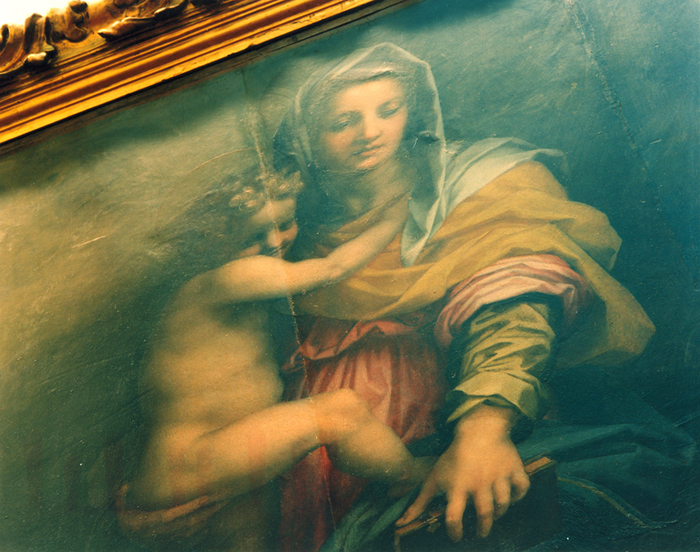
Origin: Room 26 – Raphael and Andrea del Sarto
Detail: Andrea del Sarto, Madonna of the Harpies , 1517
Galleria degli Uffizi
The layering of time evident in the royal apartments of Palazzo Pitti is less tangible in the more discreet interiors of the Uffizi and Bargello. In the Uffizi, art history unfolds through the museum's orderly, chronological hanging arrangement – it is the skeleton that defines art's evolution and provides a structure and context in which the viewer can engage with each work. Progressing through Medieval, Renaissance, Baroque, and Rococo galleries, this chronological installation of paintings constitutes a given path for visitors to negotiate the stylistic changes of art and the evolving complexities of both technique and subject matter. It reinforces the continuity of artistic periods with few conspicuous divisions. Yet it is easy for the viewer to disrupt the Uffizi's intentions by choosing their own path, threading back and forth through the maze of history. Although the museum encourages the viewer to “make meaning,” assisting them with written guides and floor plans designed by the cumulative efforts of historians, curators, and conservators, visitors inevitably construct their own narrative, as Carol Duncan suggests:
[I]n reality, people continually “misread” or scramble or resist the museum's cues to some extent; or they actively invent, consciously or unconsciously, their own programs according to all the historical and psychological accidents of who they are. 1
1. Carol Duncan, Civilizing Rituals (London and New York: Routledge, 1995), 13.